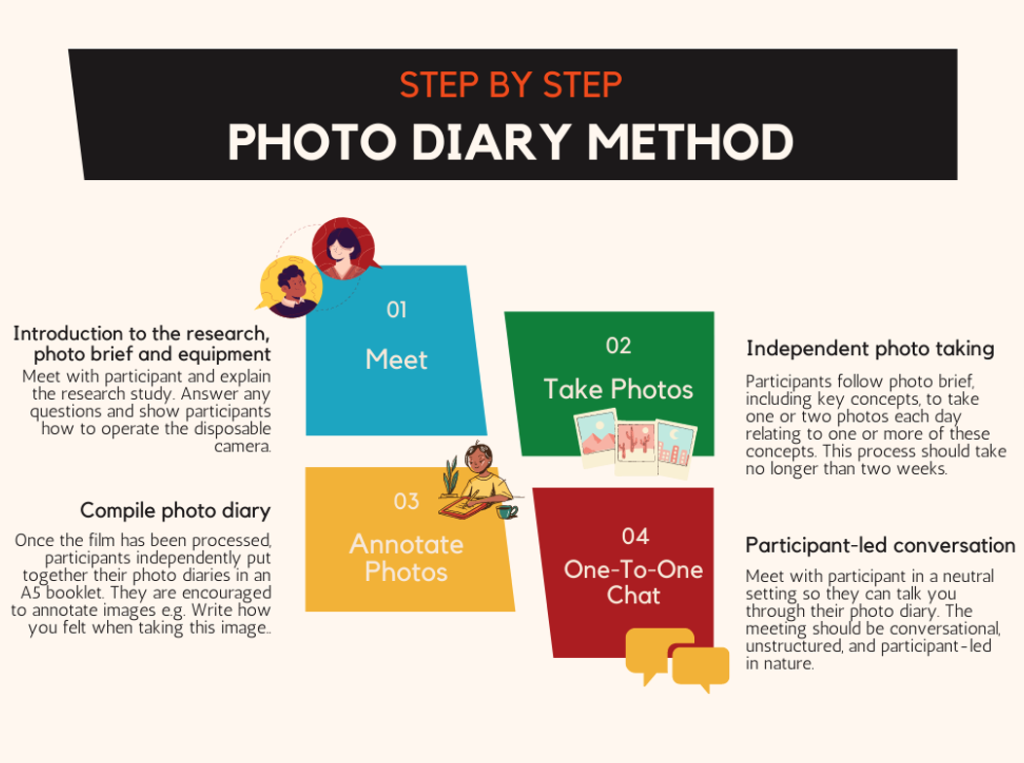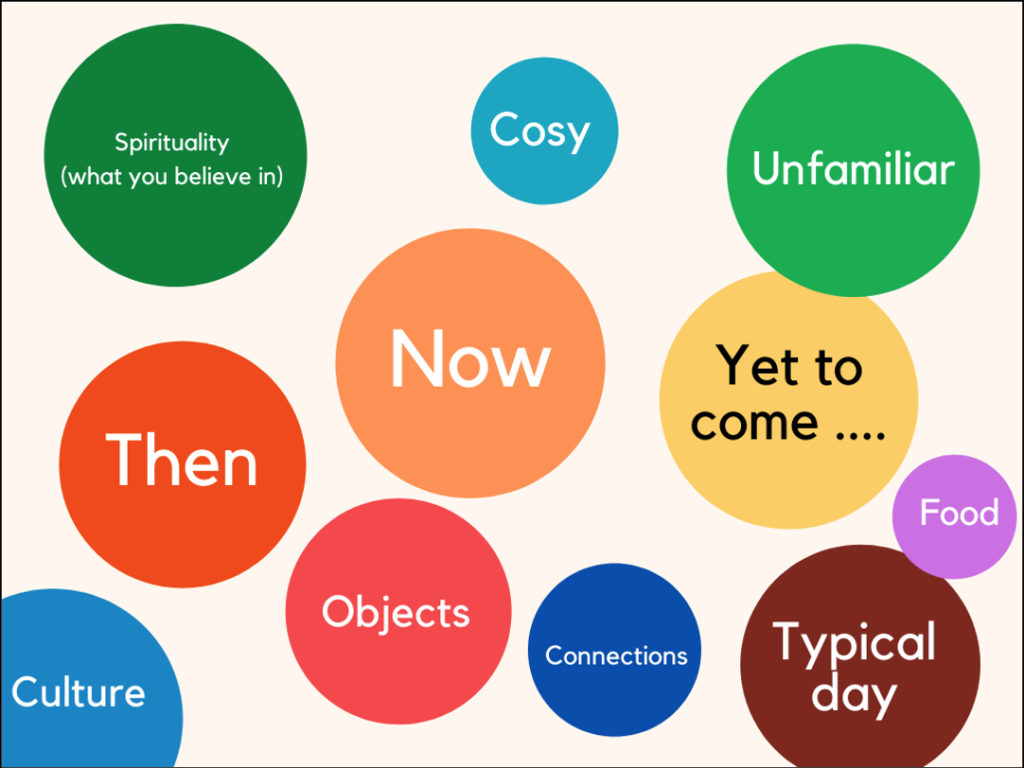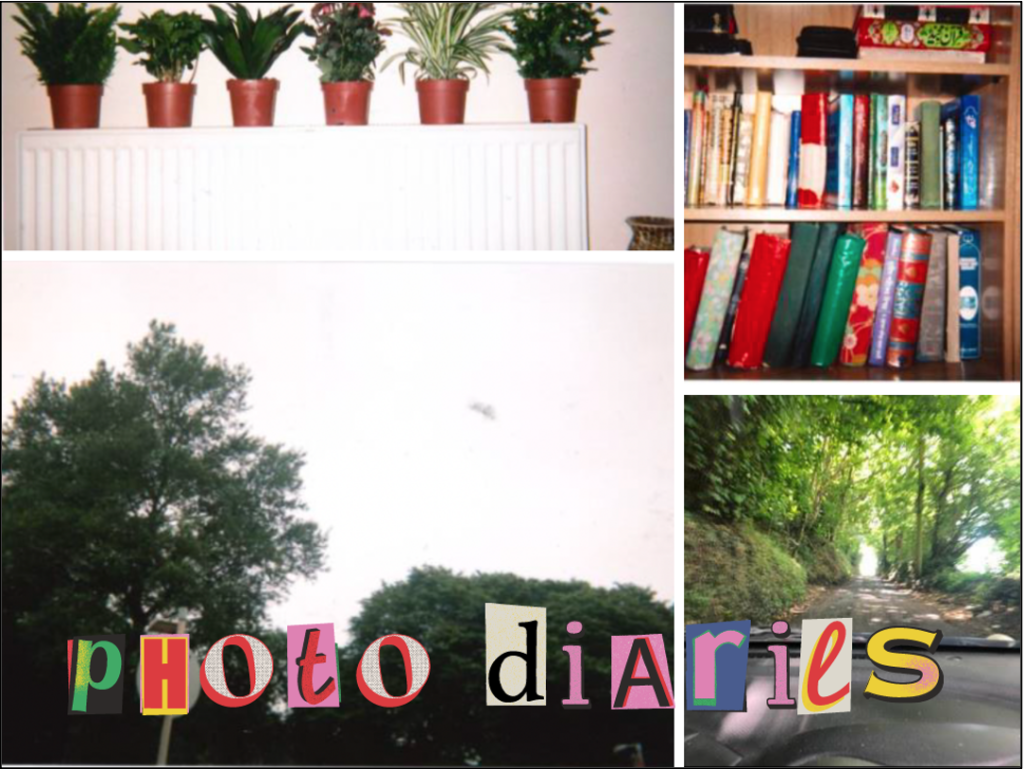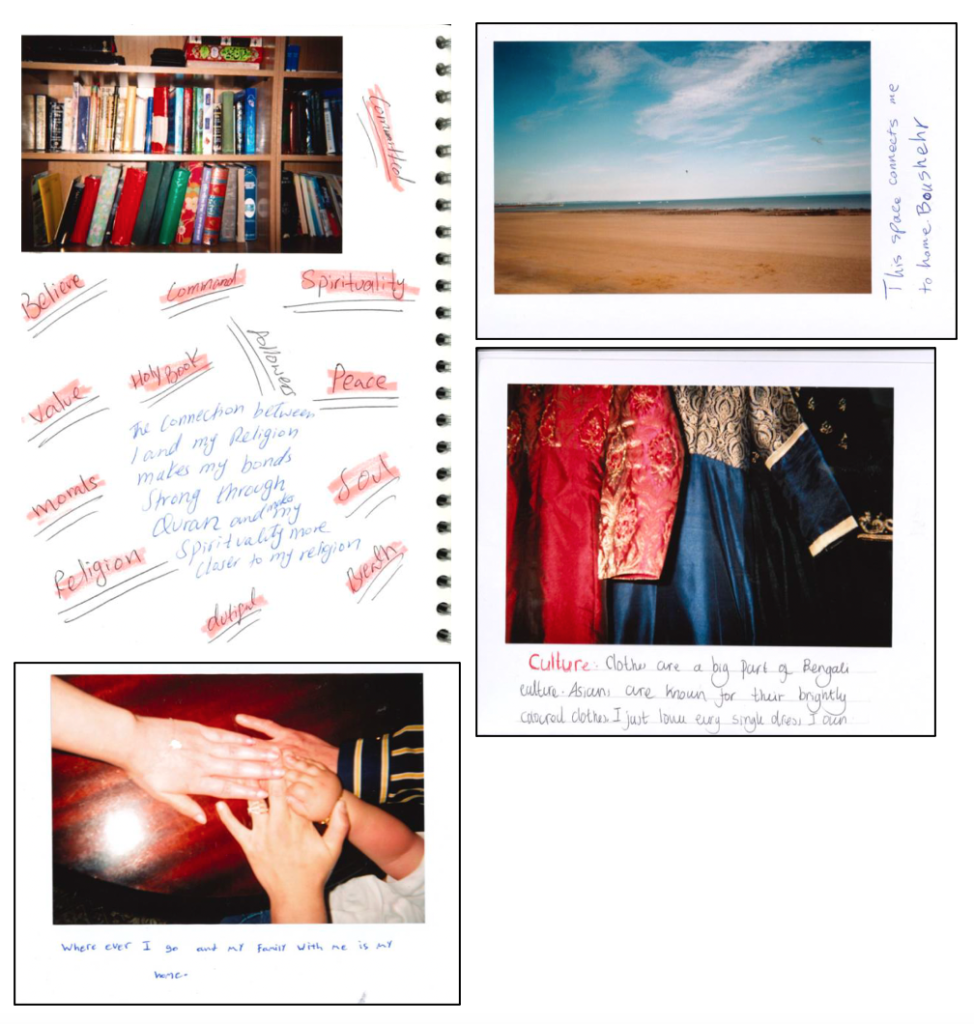With my mum she was born [in Iraq] but she left when she was a baby. She came to Britain but she still has that feeling that it’s her home. You don’t have to have just one home there can be multiple homes… I think that home isn’t where you live, it’s how you live in a way.
(Mouna, 18, 12/07/2019)
In my master’s research I explored the multiple ways that home is expressed and understood by young, Asian migrants living in Swansea. As the above quote demonstrates, home can be something more-than the ‘four walls’ you live in. Home can be where you are from, where you are, and where you are going. Home can be felt, sensed, and experienced in a complicated and messy way.
As home can be difficult to represent, to pinpoint on a map, or to contain in a structure, I chose to adopt a research method which allowed for expressions of home as dynamic, fluid and emerging. Using photo diaries allowed for incomplete and flexible examples of home to emerge for young migrants, exploring home as beyond ‘four walls’ and opening up novel ways to approach home.
Through this blog post I will show the usefulness of photo diaries as a way to articulate things that sometimes escape representation, such as feelings and affects. Reflecting upon the pros and cons of this research method, I will also outline future hopes for building upon the photo diary method in my PhD research.
Photo Diary Method
Using photos in social research is not a new concept. For the past few decades, photography has been used to understand, evidence and document phenomena. In recent years, however, the photo method has slowly shifted away from professionals, or researchers, behind the camera (Kolb, 2008). There are more and more examples of research participants being trained and taking ownership of taking photographs (Bignante, 2010; Lykes, et al., 1999; Prins, 2010), particularly within participatory action research methodology. The participant generated photo-elicitation method is utilised by researchers to “engage people in processes that enable their participation and personal growth” (Olsen, 2012, p. 99).
My study engaged with 20 research participants utilising two research methods: interviews and photo diaries. Of the participants, 12 were interviewed, and the remaining 8 were asked to produce photo diaries.

What did they produce?
Eight research participants produced a total of 136 photos. Each participant created their own paper A5 booklet showcasing their stories of home. The only criteria was to annotate each photo with a few words, or sentences, linking to themes, such as how they felt when taking the image. The flexibility that they were given resulted in a wide array of photo diaries, some with annotations, drawings, front cover designs, as well as carefully constructed chronologies of photos to show their stories of home.

Once complete, I arranged a mutual day and time to meet with participants, in a one-to-one setting, so they could talk through their photo diaries with me. Having already briefly seen some photos when I took them to get developed, I felt excited to know more about their rationale for taking these images in relation to home. There were many images that, out of context, really intrigued me to know more – everything from Teletubbies to cups of coffee and Shisha pipes!

Reflection
Unexpected routes and conversations
This flexible and participant-led approach enabled me to build upon my initial concepts and ideas, especially the concept of ‘home as emerging’. Home was photographed as something spiritual, using landscapes such as beaches, which allowed me to develop my analysis in this area, which was unexpected at the outset of my data collection.

Challenging power dynamics of researcher/researched
A key strength to using this method was in its ability to shift power to the participants in sharing their stories. Many of those involved with the study voiced their doubts at the outset about whether they could actively contribute, whether they could answer my questions, whether they were able to articulate what they wanted to say – particularly in the case of those who spoke English as an additional language. Through inviting participants to take their own photos in their own time, to construct their photo diaries by putting them together, and to take a lead in explaining the images to me, I felt this process not only encouraged investment, but also encouraged participants to use their voice to shape their narratives of home.
Opposed to more established, and traditional research methods, such as structured interviewing, this approach allowed a conversation to explore the meanings and understand anything that wasn’t clear. It also posed opportunities for myself as a researcher to be challenged by the participant, and to begin the process of analysis by working through the photo diary together, at the same time.
Challenges
Aside from the depth and richness of data that was produced from the process, there were, of course, many challenges when using the method. Namely, time, logistics, and the sheer amount of data that was produced – 136 photos in total! It was the first time I had used this research method and some aspects provided unnecessary delays:
Using disposable cameras
Disposable cameras are a fantastic tool to encourage participants to think about photos before taking them. With only 27 exposures, participants know the value in taking each shot. The downside was issues arising from faulty disposable cameras, many of which you didn’t know were faulty until photos were processed. Some photos were sadly lost in this process. As the art of film processing declines steadily due to the rise of digital cameras and smartphones, it was very difficult to find independent photo shops in Swansea with efficient turnaround times – most took just under two weeks to develop photos.
Flexible, but not too flexible deadlines
It was difficult to find a balance of being prescriptive with the timeframe with the freedom to create images that were meaningful for the participant. The initial brief provided to each participant allowed two weeks to take images, meaning there was a few days of flexibility, such as if the participant didn’t feel like taking an image on one day they could skip it and make it up later on. It is important to note, however, that sometimes ‘life happens’, and participants needed more time to complete their tasks. Sometimes procrastination, as with many of us, can result in delays for participants to provide their photo diaries. I found that by ensuring good communication with participants it was helpful to check in once after a week to see whether they were facing any challenges which may delay the final photo diary.
Photo diaries and participant retention
In particular, I think due to its time intensity, this research method is not going to be appropriate for all research settings. Due to my prior relationships with young people, I felt able to use my skills, knowledge, and connections to develop this method. I didn’t feel concerned about losing retention of participants once they had started the process. Upon reflection, however, I can see many more issues that could have arisen which would have resulted in lost, unfinished, or a lack of data from participants.
Future plans

I intend to take away key advantages and disadvantages of using the photo diary method, in order to build upon this approach within my PhD research study, called ‘Sensing Wales’. In a TED talk, the writer Chimamanda Ngozi Adichie warned of the ‘Danger of the single story’. With this in mind, this project will hopefully provide a diversity of ways for young people to express their complex and multifaceted experiences, to overcome stereotypes of ethnicity, religion, gender and migration experience.
Please feel free to get in touch if you would like to have a chat about using this approach or more broadly about this upcoming PhD project. I am more than happy to share ideas and resources 🙂
Bibliography
Bignante, E. (2010). The use of photo-elicitation in field research: Exploring Massai representations and use of natural resources. EchoGéo, 11, 1-20.
https://doi.org/10.4000/echogeo.11622
Kolb, B. (2008). Involving, Sharing, Analysing – Potential of the Participatory Photo Interview. Forum Qualitative Sozialforschung / Forum: Qualitative Social Research, 9(3), Art. 12.
https://doi.org/10.17169/fqs-9.3.1155
Lykes, M.B., Mateo, A.C., Anay, J.C., Caba, A.L., Ruiz, U. & Williams, J.W. (1999). Telling stories-rethreading lives: community education, women’s development and social change amongh the Maya Ixil. International Journal of Leadership in Education, 2(3), 207-227.
https://doi.org/10.1080/136031299293039
Olsen, W. (2012). Data Collection: Key Debates and Methods in Social Research. Sage Publications Ltd.
https://dx.doi.org/10.4135/9781473914230.n17
Prins, E. (2010). Participatory photography: A tool for empowerment or surveillance. Action Research, 8(4), 426-443.
https://doi.org/10.1177/1476750310374502
Rose, G. (2016). Visual Methodologies: An Introduction to Researching with Visual Materials (4th edition.). SAGE Publications.
Van Liempt, I. & Bilger, V. (2009) The Ethics of Migration Research Methodology: Dealing with vulnerable immigrants, Sussex Academic Press.